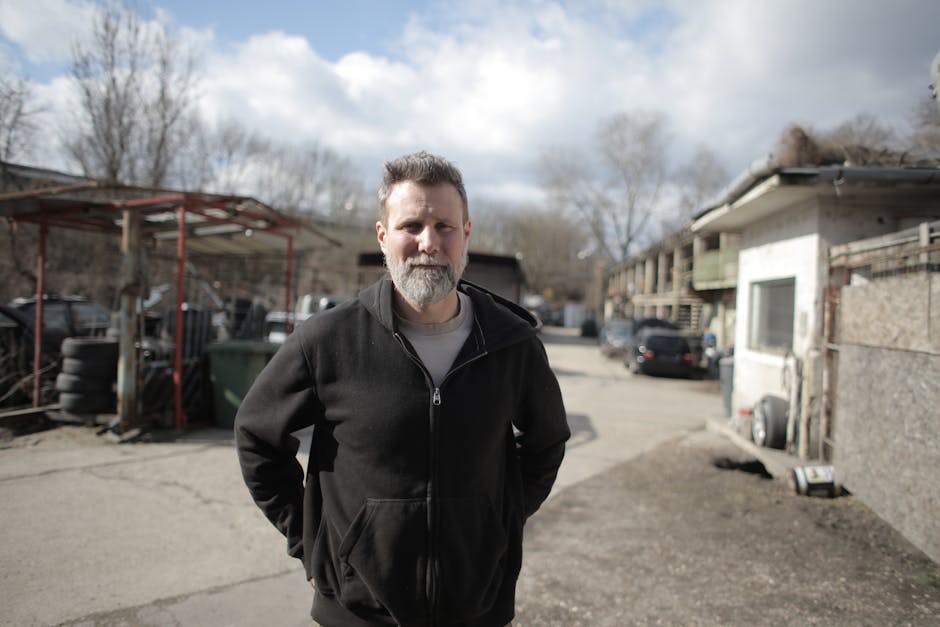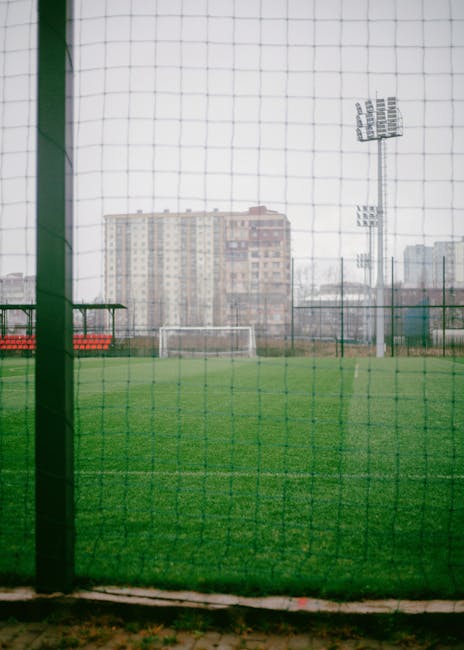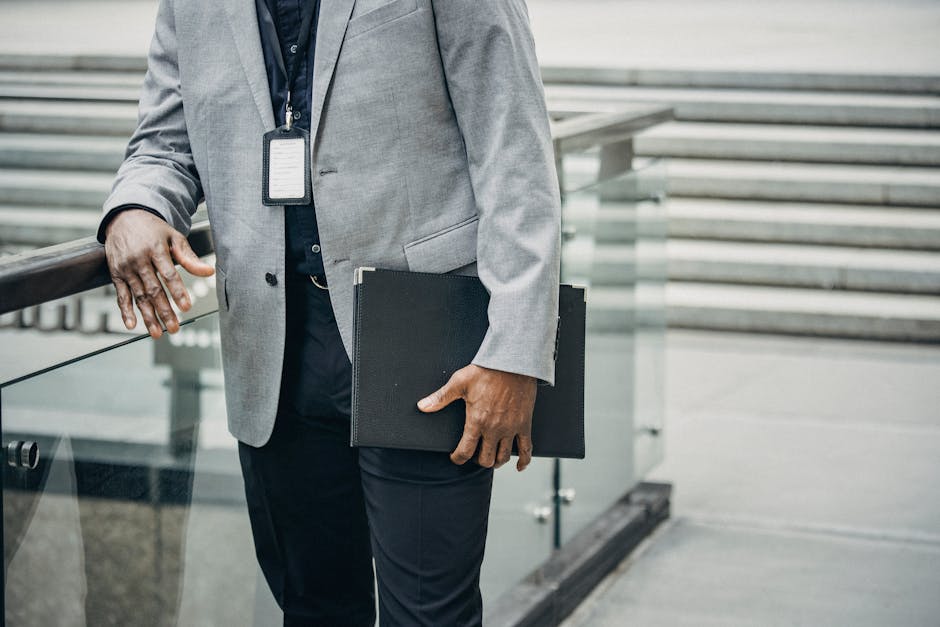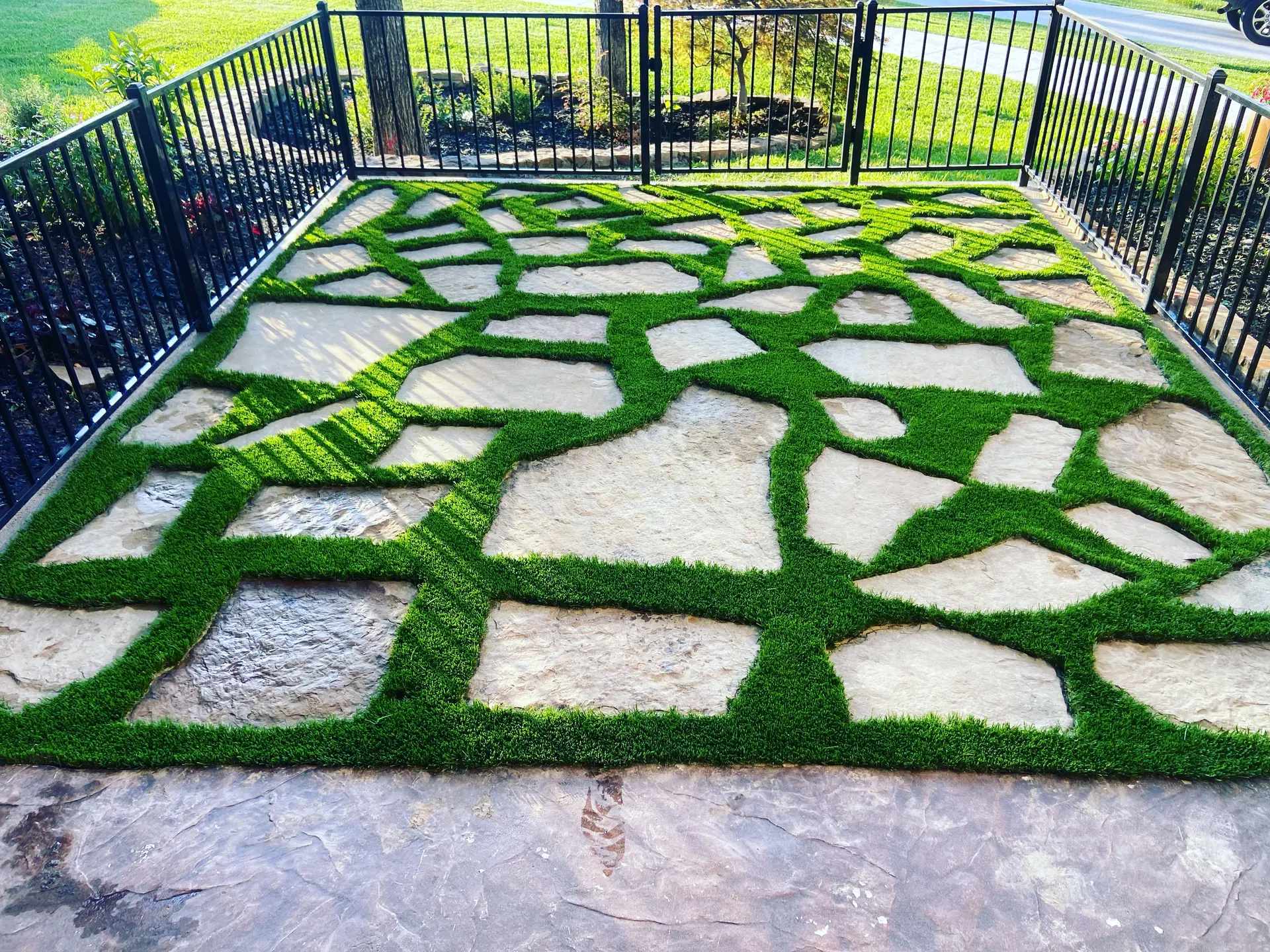
The Importance of Urban Green Spaces
Urban green spaces play a vital role in enhancing the quality of life for city residents. These areas offer numerous environmental, social, and economic benefits that contribute to a healthier, more sustainable urban environment.
Environmental Benefits
Green spaces in urban areas help to mitigate the effects of pollution and urban heat islands, reduce noise levels, and support local biodiversity. Key environmental benefits include:
- Air Quality Improvement: Vegetation in green spaces absorbs pollutants and releases oxygen, improving air quality.
- Temperature Regulation: Green spaces can reduce temperatures by providing shade and releasing moisture through transpiration.
- Water Management: Turf and plants facilitate rainwater infiltration, reducing runoff and preventing flooding.
- Biodiversity Support: Urban green spaces provide habitats for various species, supporting biodiversity.
Social and Health Benefits
Urban green spaces offer significant social and health benefits by promoting physical activity, mental well-being, and community cohesion. Benefits include:
- Physical Health: Access to green spaces encourages outdoor activities such as walking, jogging, and sports, which improve physical health.
- Mental Well-being: Natural settings in urban areas reduce stress, anxiety, and depression by providing a calming environment.
- Social Interaction: Green spaces serve as communal areas where residents can gather, fostering social interactions and community bonds.
- Esthetic Value: Well-maintained green spaces enhance the visual appeal of urban areas, contributing to overall satisfaction.
Economic Benefits
Urban green spaces can also contribute to the economic vitality of a city. Economic benefits include:
- Property Value Increase: Proximity to green spaces typically increases property values and attracts investments.
- Tourism Boost: Attractive parks and recreational areas can draw tourists, supporting local businesses.
- Reduced Healthcare Costs: Improved physical and mental health outcomes from access to green spaces can lead to lower healthcare expenses.
Quantitative Impact
Studies have quantified the range of benefits associated with urban green spaces. For instance:
| Aspect | Impact |
|---|---|
| Air Quality Improvement | Reduction of pollutants such as NO₂ by up to 30% |
| Temperature Regulation | Urban areas with substantial green spaces can be cooler by 2-3°C |
| Property Value Increase | Properties near parks see an increase in value by 5-20% |
Challenges in Urban Landscape Design
Urban landscape design faces several unique challenges due to the high density of buildings, limited space, and specific environmental conditions. Understanding these challenges is key to developing effective and sustainable solutions.
Space Constraints
One of the primary issues in urban landscapes is the limited availability of space. Cities are densely built environments, often leaving little room for green spaces. As a result, creative and efficient use of small areas becomes essential in urban planning.
Environmental Stressors
Urban areas are subject to various environmental stressors, including pollution, heat islands, and limited water supply. These factors can affect the health and sustainability of green spaces.
| Environmental Stressor | Impact |
|---|---|
| Pollution | Reduced air and soil quality, harming plant health. |
| Heat islands | Increased temperatures, leading to higher evaporation rates and stress on plants. |
| Limited water supply | Challenges in maintaining hydration for plants. |
Maintenance and Costs
The upkeep of green spaces in urban areas can be costly and labor-intensive. Budget constraints often limit the extent and quality of urban greenery. Regular maintenance requirements include watering, mowing, and pest control.
Soil Quality
In many urban settings, the soil quality is poor, compacted, or contaminated. This makes it difficult for plants to establish and thrive. Enhancing soil conditions may require significant intervention, including soil replacement or addition of amendments.
People and Infrastructure
High foot traffic and the presence of infrastructure such as pipes, cables, and hardscapes pose additional challenges for urban green space design. These elements can restrict plant growth and require innovative solutions to incorporate turf and greenery effectively.
Wildlife Habitats
Urban landscapes need to balance the creation of green spaces with the necessity of providing habitats for local wildlife, as well as minimizing human-wildlife conflict. Designing ecologically functional green spaces can be complex yet essential for biodiversity.
Addressing these challenges requires innovative thinking, advanced materials, and smart design practices, which can help maximize the utility and aesthetics of small urban outdoor spaces.
The Role of Turf in Urban Settings
In urban environments, turf plays a critical role in enhancing the aesthetic appeal and functionality of small outdoor spaces. The presence of turf in these areas offers numerous benefits ranging from environmental advantages to improvements in mental well-being. Given the scarcity of available land in urban landscapes, effectively integrating turf solutions can substantially elevate the quality of urban living.
One of the most significant contributions of turf in urban settings is its positive impact on the environment. Turfgrass helps in carbon sequestration, as it captures atmospheric carbon dioxide through the process of photosynthesis, reducing the carbon footprint. Additionally, turfgrasses act as natural air purifiers, trapping dust, pollen, and particulate matter, thereby improving air quality.
Urban heat islands, where urban areas become significantly warmer than their rural surroundings, can be mitigated by incorporating turf in urban design. Naturally cooling through the process of evapotranspiration, turf helps to lower surface temperatures and reduce the heat island effect. This cooling effect not only contributes to a more pleasant microclimate but also helps in lowering energy consumption for cooling buildings.
Another ecological benefit of turf in urban settings is soil erosion control. Turfgrass roots bind the soil, reducing the risk of erosion caused by wind and water. Additionally, the dense turf coverage can enhance soil health by improving its structure and increasing its ability to retain water.
Turf also has substantial social and psychological benefits. Access to green spaces has been shown to improve mental health, providing a calming effect and reducing stress. Parks, gardens, and grassy areas encourage social interaction, fostering a sense of community and offering spaces for recreational activities.
Despite the various benefits, the implementation of turf in urban environments presents particular challenges, such as the need for maintenance and adequate water supply. However, advancements in turf technology and materials, including drought-resistant grass species and artificial turfs, have made it easier to overcome these challenges.
The following table highlights some of the key benefits of turf in urban settings:
| Benefits | Description |
|---|---|
| Environmental | Carbon sequestration, air purification, and reduction of urban heat islands |
| Ecological | Soil erosion control and improved soil health |
| Social & Psychological | Improved mental health, stress reduction, and promotion of community interaction |
In conclusion, turf plays an indispensable role in urban settings, contributing to environmental health, social well-being, and urban aesthetics. Maximizing the use of innovative turf solutions in urban landscapes can thus significantly enhance the livability of densely populated areas.
Innovative Turf Technologies and Materials
In the evolving landscape of urban design, innovative turf technologies and materials are transforming small outdoor spaces into vibrant and functional areas. These advancements address the unique challenges of urban environments such as limited space, high foot traffic, and environmental considerations.
Synthetic Turf Solutions
Synthetic turf has become a popular choice for urban landscapes due to its low maintenance requirements and durability. Unlike natural grass, it does not require watering, fertilizing, or mowing. This makes it an environmentally friendly option, especially in areas prone to drought.
Modern synthetic turfs are designed to mimic the appearance and texture of natural grass. They are made from materials such as polyethylene and polypropylene, which provide a soft yet resilient surface suitable for a variety of activities.
Hybrid Turf Systems
Hybrid turf systems combine the benefits of both natural grass and synthetic fibers. These systems use synthetic fibers integrated into the natural grass to reinforce the surface, making it more durable and able to withstand heavy use.
This innovation not only extends the life of the turf but also reduces the need for intensive maintenance. Hybrid turfs are especially useful in high-traffic urban areas like parks, sports fields, and playgrounds.
Permeable Turf Systems
Permeable turf systems, also known as permeable paving or grass pavers, allow water to infiltrate through the surface, reducing runoff and promoting groundwater recharge. These systems incorporate a structural grid that supports the turf while ensuring proper drainage.
This technology is particularly beneficial in urban environments where stormwater management is a concern. Permeable turf helps mitigate flooding and reduces the strain on municipal drainage systems.
Cool Turf Technologies
Urban heat islands are a significant issue in densely populated cities, where temperatures can be several degrees higher than in surrounding areas. Cool turf technologies aim to combat this problem by using materials that reflect sunlight and reduce heat absorption.
Research has shown that cool turf can lower surface temperatures by up to 30%, making urban areas more comfortable during hot weather. This also contributes to energy savings by reducing the need for air conditioning in nearby buildings.
Recyclable and Sustainable Materials
Sustainability is a key consideration in modern urban design. Many turf manufacturers are now focusing on using recyclable and sustainable materials in their products. This includes using recycled plastics for synthetic turfs and developing biodegradable options.
By incorporating sustainable practices, these innovations help reduce the environmental impact of urban landscaping projects and contribute to the overall goal of creating greener cities.
In summary, the integration of these innovative turf technologies and materials is revolutionizing the design and functionality of small urban outdoor spaces. As cities continue to grow and evolve, these solutions will play a crucial role in enhancing the quality of urban life.
Case Studies of Successful Urban Turf Implementations
Several cities around the world have effectively utilized innovative turf solutions to maximize their small outdoor spaces, demonstrating the potential of advanced materials and design techniques. This chapter explores a few notable examples to highlight how urban areas can be transformed through strategic turf implementations.
New York City’s High Line
The High Line is an elevated linear park built on a historic freight rail line in New York City. It showcases how disengaged infrastructure can be repurposed into thriving green spaces. The park features a mix of natural grasses, flowering plants, and turf areas, offering visitors an oasis in the midst of the urban environment.
The project emphasizes the use of sustainable materials and native plant species to ensure longevity and low maintenance. Turf sections provide comfortable spots for relaxation and community activities, enhancing the overall user experience.
Singapore’s Gardens by the Bay
Gardens by the Bay is a landmark in Singapore, known for its large-scale garden artistry and innovative use of space. It includes expansive green areas with specialized turf that withstands tropical weather conditions. The strategic placement of turf areas complements the gardens’ diverse ecological zones and architectural features.
By integrating turf with other greenery, the Gardens offer a calming and aesthetically pleasing escape from urban stress without compromising on space utilization. The site also employs advanced irrigation and soil management techniques to maintain the health and appearance of the turf.
Copenhagen’s Superkilen Park
Superkilen is a unique public park in Copenhagen, designed to celebrate diversity through the inclusion of objects and elements from around the world. The park incorporates a variety of surfaces, including turf, to create functional and visually stimulating sections.
The turf areas not only serve recreational purposes but also enhance the park’s visual appeal and contribute to its environmental sustainability. By carefully selecting robust turf varieties, the project successfully combines cultural representation with practical urban green space needs.
Melbourne’s Birrarung Marr
Birrarung Marr is a prominent park in Melbourne, offering a mix of open spaces, pathways, and turf areas along the Yarra River. The park integrates turf to provide comfortable, versatile spaces for public events, relaxation, and sports activities.
Periodic updates with advanced turf materials ensure that the park remains resilient against heavy foot traffic and seasonal variations. Effective drainage systems and regular maintenance schedules help maintain the quality of the turf, promoting long-term usability.
- Utilizing native or adaptable plant species can enhance the sustainability and resilience of turf installations.
- Integrating advanced turf technologies can significantly extend the lifespan and quality of urban green spaces.
- Designing multifunctional green areas encourages community engagement and maximizes the utility of available space.
These case studies collectively showcase the versatility and potential of turf in urban settings. By adopting innovative approaches and technologies, cities can transform limited outdoor spaces into functional, sustainable, and aesthetically appealing environments that benefit the community and the ecosystem alike.
Future Trends in Urban Turf Solutions
Looking ahead, the future of urban turf solutions is shaped by evolving technological advancements and growing environmental consciousness. As urban areas continue to expand, finding new ways to integrate green spaces sustainably and efficiently will remain a paramount concern.
One significant future trend is the development of smart turf systems. These systems incorporate sensors and IoT (Internet of Things) technologies to monitor soil moisture, temperature, and nutrient levels in real-time. By collecting and analyzing this data, smart turf systems enable precise irrigation and fertilization, which can significantly reduce water usage and improve turf health.
Another promising trend is the employment of biodegradable and eco-friendly turf materials. As more cities adopt stringent environmental regulations, the use of synthetic materials that can decompose naturally is gaining traction. These materials not only reduce the ecological footprint but also contribute to promoting biodiversity in urban settings.
The application of drone technology for turf maintenance is also emerging as a potential game-changer. Drones can be used for aerial seeding, spraying, and monitoring, allowing for efficient and uniform turf care over large areas. This method minimizes human labor and ensures the maintenance process does not disrupt daily urban activities.
In addition to innovative maintenance techniques, there is a movement towards incorporating more native and drought-resistant grass varieties. These species are better adapted to local climates and require less water and maintenance. By supporting the use of native grasses, urban planners can create more resilient and sustainable green spaces.
Furthermore, advancements in artificial turf design continue to evolve. Modern artificial turfs are designed to mimic the appearance and feel of natural grass more closely while offering the benefits of lower maintenance and long-lasting durability. Innovations such as infill materials that improve cushioning and reduce heat absorption are being developed to enhance the usability and comfort of artificial turfs in urban environments.
Looking forward, urban turf solutions will likely also embrace multi-functional green spaces. The integration of turf with other green infrastructure elements such as green roofs, vertical gardens, and bioswales can maximize the utility of limited urban space. These combined systems can help manage stormwater, improve air quality, and provide recreational areas, all within the same footprint.
Finally, as sustainability becomes a key driver in urban planning, the adoption of renewable energy sources for turf maintenance equipment is expected to rise. Lawn mowers, trimmers, and other maintenance tools powered by solar or battery energy can significantly reduce the carbon footprint associated with traditional gas-powered equipment.
Overall, the future of urban turf solutions is geared towards sustainability, smart technology integration, and multi-functional use. These trends indicate a shift towards creating greener, more efficient, and more resilient urban landscapes.


